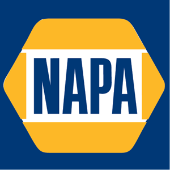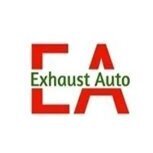-
Welcome to Auto Parts Forum
Whether you are a veteran automotive parts guru or just someone looking for some quick auto parts advice, register today and start a new topic in our forum. Registration is free and you can even sign up with social network platforms such as Facebook, X, and LinkedIn.
Best Car Dollies
-
Similar Topics
-
By abenleulmi
The thermostat is a crucial component in your car's engine system, playing a vital role in regulating the engine temperature. Contrary to common beliefs, removing your car's thermostat can lead to severe consequences, affecting fuel efficiency and engine lifespan. In this article, we will explore the benefits of retaining the thermostat and explain why removing it should be avoided. link hidden, please login to view -
By Counterman
Research by Carfax shows the used car market surging in both value and volume. The automotive aftermarket is positioned to benefit significantly—and among those who understand it best is
link hidden, please login to view, president of link hidden, please login to view (APA). In an industry where profitability is boosted by the number of repairable vehicles on the road, the recent upswing in used car sales is providing tailwinds that aftermarket businesses are ready to ride. “An increase in used car sales as well as an increased valuation of those cars both have huge benefits for our business,” Tucker explains. “With more vehicles on the road in that sweet spot of being 4-12 years old, our opportunity for selling parts increases exponentially.”
That “sweet spot” Tucker refers to is the prime range for aftermarket demand. These vehicles are typically out of warranty, increasingly in need of maintenance and repair, and owned by drivers more likely to invest in keeping them roadworthy—especially when used car values are holding strong. It’s a powerful combination that leads to increased part sales, especially in high-failure-rate categories.
Data is the Differentiator
According to Tucker, the key to capitalizing on this growing opportunity lies in one word: data.
“Keeping track of what we need to have on the shelf to service this aging car parc is the number one driver in capitalizing on servicing these vehicles,” he says. “Also understanding how the types of repairs change as the vehicle ages is important. Here again, data is the driver to success.”
From stocking the right parts for the right model years to understanding when customers shift from premium to value-tier products, every decision aftermarket businesses make should be rooted in understanding vehicle age trends and consumer vehicle repair behavior. “Understanding the brands and price points that change as the vehicle ages also must be top of mind,” he adds.
Growth For Established Players
With used car sales rising sharply, some might foresee a flood of new players entering the aftermarket to capitalize on that replacement parts demand. But Tucker doesn’t see it playing out that way.
“Having an aging car parc also means expanding your inventory in order to cover those additional model years adequately,” he says. “Having inventory dollars invested in the right places is not something that happens overnight, and so new entrants into this space are few and far between.”
Instead, he anticipates new investments going into existing aftermarket businesses. The industry’s resilience—especially during economic uncertainty—continues to attract capital. “I won’t ever say we are recession-proof as an industry, but we are recession-resistant,” Tucker notes. “Our space has proven to be an attractive one for investors and I don’t see that changing.”
Vehicle Categories for Strong Sales
While aging vehicles generally mean more part sales overall, Tucker is quick to point out that those sales fluctuate based on a variety of factors: vehicle miles driven, car parc composition and failure rates.
“When you take all of those into account, we see categories such as brakes, ride control and chassis all having exponential growth,” he says. “Anything the vehicle must have to start, run and stop effectively are all areas of strong growth.”
And as used car values rise, owners are more inclined to authorize discretionary repairs, reversing a trend often seen in older vehicles. “We will also see more of those discretionary repairs come into play on older vehicles as their value holds strong and steady,” Tucker adds.
The post
link hidden, please login to view appeared first on link hidden, please login to view.
link hidden, please login to view -
By APF
When selecting parts for a car repair, it pays to know the differences between original and aftermarket parts. Whenever possible, get estimates for both.
Choosing between original and aftermarket car parts — and even used parts of either type — is all about squaring your priorities with your budget.
You’ll have different options depending on the part and the shop. And the best choice will depend on whether you’re trying to keep repairs cheap, restore your car’s appearance after a wreck or soup up your ride.
» SIGN UP: link hidden, please login to view
Before we get into that, here are the key differences:
Original equipment manufacturer (OEM) parts match those that came with your car, and are of the same quality as its original parts. They’re also the most expensive. Aftermarket parts are cheaper, and made by other manufacturers — often several, giving you more options. Used parts may have a bit of wear and tear, but should be inspected or rebuilt to ensure they’ll work. These are the cheapest option. Choosing between aftermarket and OEM parts
Your decision will depend on the type of repair and the quality and price of the parts. Always look for parts that come with a warranty, even if they’re OEM, so you’ll be protected in case they fail.
Auto body repairs
Some aftermarket parts may be OK for
link hidden, please login to view, but others won’t be as good, says Michael Calkins, manager of technical services at AAA. “There’s a lot of variation in quality.” For example, he says, aftermarket parts often don’t have the same level of rustproofing as original parts, fit and finish don’t match, or panels don’t align properly. If OEM parts are used in auto body repair, the car should look and work exactly as it did before the damage, because everything will match up. OEM parts are also crash-tested, unlike many aftermarket parts.
Aftermarket parts come at varying price points and levels of quality, but because they are cheaper, insurance companies often prefer them. If you want OEM parts but are dealing with an insurer that wants the shop to use aftermarket parts, ask to pay the difference.
“There’s also the option of used parts, depending on the age of the vehicle,” Calkins says. “It may be cheaper than an aftermarket part but still have all of the original quality.”
Mechanical repairs
A used part, whether it’s OEM or aftermarket, can really save money on repairs under the hood, so long as it’s inspected first and warrantied. And some aftermarket companies reverse-engineer their products to be even better than OEM versions.
For example, many car buffs will tell you that you can get heavy-duty shocks and struts or brake pads that are made of stronger materials. Scan some reviews online, or talk with your mechanic if you’re not sure whether an aftermarket part could be an upgrade.
Adding some extras
If you’d like to modify your ride by adding something like a backup camera or back-seat TV screen, you’ll probably be looking for aftermarket parts. Certain aftermarket upgrades could increase
link hidden, please login to view. This is especially true for improvements like a better sound system or alloy wheels, rather than mechanical repairs. Who provides OEM or aftermarket parts?
The options you’ll have for parts depends on the nature of the repairs and what type of shop you take your car to:
Dealership repair shops will offer only OEM parts — they have no reason to offer a cheaper product from a competitor link hidden, please login to view may be able to offer you a choice between OEM and aftermarket parts Independent garages that specialize in your type of vehicle will likely have both, but with quicker access to OEM parts, including used OEM parts, which can really save you Auto body shops can offer both, but if your collision repair is part of an insurance claim, the insurer will likely prefer aftermarket parts to save money Depending on the job, the cost of OEM versus aftermarket parts varies. Whenever you’re given the choice, ask to see estimates for both so you can weigh your options.
Source:
link hidden, please login to view -
By Exhaust Auto
Hey everyone, I’ve been researching car resonators for a custom exhaust build and wanted to ask for some advice. How do resonators help refine the exhaust sound and reduce unwanted noise frequencies? I’ve heard they can improve the overall exhaust note and performance, but I'm curious if they really make that much of a difference for performance tuning.
Any suggestions or experiences would be awesome, especially if you've worked with resonators for tuning your vehicle. Thanks!
If Someone check this product detail visit this : link hidden, please login to view
car-Resonator-Muffler.avif
-
-
By WiperTech008
How car wiper works
Car wipers help drivers see clearly when it's raining or snowing. They’re a small but important part of the car. Here’s a simple look at how they work:
Wiper Blades
They’re just rubber (or sometimes silicone) strips that slide across your windshield to keep it clear.
Wiper Arms
The metal arms hold the blades and move them back and forth across the glass.
Wiper Motor
There’s a little electric motor under the hood that makes the arms move. It’s usually under the hood.
Linkage
This is a set of mechanical parts that connect the motor to the arms. It makes sure both arms move together smoothly.
Wiper Pivot
This is the spot where the arms are attached to the car. It lets the arms rotate as they move.
Wiper Switch
You turn the wipers on and off with a switch—usually on the dashboard or the steering wheel.
Wiper Relay
This part controls the power going to the motor. It helps the wipers run at different speeds, like slow, fast, or on and off (intermittent).
How It All Works Together
When you turn on the wipers, the switch sends a signal to the relay. The relay gives power to the motor. The motor starts spinning, and the linkage changes that spinning motion into the back-and-forth movement of the arms. They just sweep across the windshield and get rid of whatever’s in the way.
Intermittent Wiping
For light rain, you can use the intermittent setting. It makes the wipers move with short pauses in between.
Washer System
Most cars also have a washer system that sprays cleaning fluid on the windshield. When you press the washer button, a small pump sprays the fluid through nozzles to help clean the glass.
-






Recommended Posts
Join the conversation
You can post now and register later. If you have an account, sign in now to post with your account.
Note: Your post will require moderator approval before it will be visible.